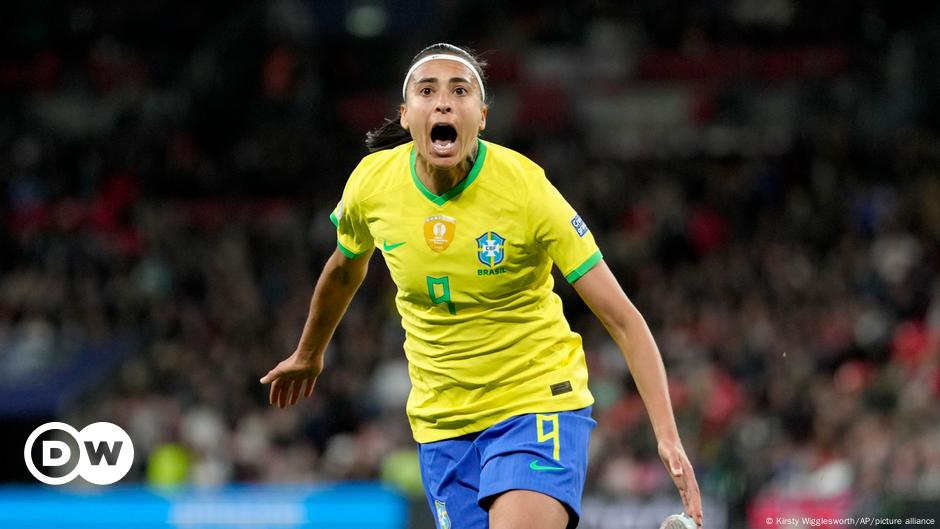Brazil women’s football on the rise? – DW – 04/10/2023
It has been almost four years since the Brazilian Football Association (CBF) brought in Pia Sundhage, one of the leading figures in women’s football.
The 63-year-old Swedish coach had won two Olympic gold medals with the United States and worked in Sweden and China.
In Sundhage, the CBF not only signed a dazzling figure in women’s football but one with the know-how to help Brazil close the gap to the world’s — the US and Europe.
In July 2022, the Selecao won the Copa America with Sundhage, beating hosts Colombia 1-0 in the final. Last week, they went toe-to-toe with England in the Finalissima, a match between the South American and European champions, before losing on penalties. On Tuesday, they face an endurance in Nuremberg against Germany as part of their preparations for the World Cup in Australia and New Zealand.
But for Brazil to become a top footballing power on the women’s side, they need more than superstars like Marta, a six-time world player of the year. The solution starts at the grassroots level, where future Brazilian players are developed.
‘Looking for the place women’s football deserves’
“I see football continuing to grow. It’s televised more, it’s talked about more,” Mayara Vaz, a player for second division side Botafogo in Rio de Janeiro, tells DW.
That wasn’t the case before, the 27-year-old says. Growing up in Rio de Janeiro, she had to train with the boys, but now there are better opportunities for young players. The structure, foundation and pay have improved, but there is still potential to optimize.

“We could still use more visibility so that people can follow women’s football and have more access to it,” Vaz says, but she admits that clubs like Botafogo “are giving female street footballers the opportunity to be recruited to the club so they can develop here.”
The potential of many female players who ply their trade on the beach, on the streets or on the field can be harnessed much better, Vaz explains. She adds that the CBF’s decision to put male and female players on equal footing when it comes to pay is also a “a very positive sign.”
“But we are still looking for the place that we in women’s football deserves,” she says.
Big differences at the academy level
Botafogo coach Gustavo Roma believes the structural changes the federation has implemented will payoff in the long run but still sees room for improvement.
“At U20, U17 level, these championships are important for us so the players can get minutes at a young age,” Roma, 43, says. But the big difference between men and women, according to him, is that boys start much earlier.

“They are already training at clubs when they are five or six,” the coach explains. “Not all the players we get in professional teams have that background, so they have to correct things in training that should have been done when they are young.”
If Brazil really wants to take development seriously and have female players work in youth academies from a young age, Roma says, “I’m sure that women’s soccer will develop a lot and the players will be much better prepared for the U20 and professional levels. And that will facilitate their technical, physical and psychological development on the pitch.”
Roma thinks it’s no coincidence that the US is leading the way in women’s football. “Girls in the US start playing at the age of three or four in school, then it continues in high school and finally in college,” he explains, noting the continuity and structure these players receive from an early age.
2027 World Cup in Brazil: Their big chance?
Crucial to professionalizing women’s football in Brazil could be the 2027 World Cup, which the nation is bidding to host.
“When a World Cup is held here in the country, we know there will be a lot of media interest. And with media comes sponsorship and investment,” Roma says. “That’s important for the further development of women’s soccer in Brazil.”
The country’s potential s gigantic, he says, and Brazil has first-class talent, “but we also need an opportunity for them. The girls must be given the opportunity to train at a high level when they are 11 or 12.”
He insists the players have great will and work very professionally. “What they need is investment and fan support.”
Ramona Samuel contributed to this story.This article was adapted from German.
For all the latest Sports News Click Here

